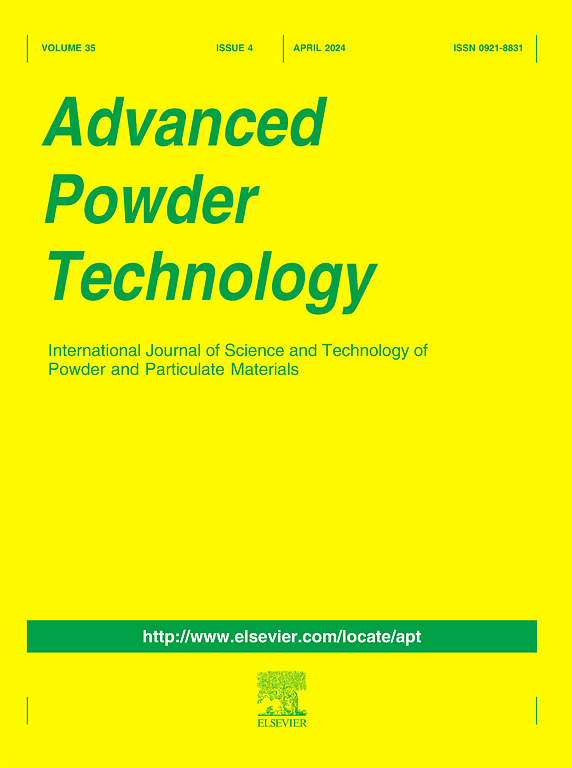养护温度和废大理石骨料对用工业副产物和废焙烧粘土粉制备地聚合物砂浆性能的影响
IF 4.2
2区 工程技术
Q2 ENGINEERING, CHEMICAL
引用次数: 0
摘要
本研究探讨了由粉煤灰(F)、高炉炉渣(S)、废焙烧粘土(WBC)和废大理石等多种废材料制成的地聚合物砂浆的物理、力学和微观结构特性。采用两阶段工艺来开发满足特定性能目标的迫击炮。在第一阶段,地聚合物混合物是由工业副产品和白细胞衍生的粉末状前体制备的。在第二阶段,研究了用不同水平(重量为25%、50%和75%)的废大理石骨料代替河砂的效果,重点研究了表现出优异机械强度的混合物。结果表明,f基砂浆在80℃固化时的最大抗压强度为38.2 MPa,而s基砂浆在60℃固化时的最大抗压强度为48.5 MPa。粉煤灰基砂浆的力学性能随着粉煤灰用量的50%而提高。此外,在粉煤灰基砂浆中掺入高达25%的废大理石骨料可以提高砂浆的强度。本研究通过促进WBC、工业副产品和废大理石的再利用,支持可持续建筑材料的发展。该方法为减少传统砂浆生产中自然资源消耗和碳排放提供了一条可行的途径。本文章由计算机程序翻译,如有差异,请以英文原文为准。

Effects of curing temperatures and waste marble aggregates on the properties of geopolymer mortars produced with industrial by-products and waste baked clay powders
This study explores the physical, mechanical, and microstructural properties of geopolymer mortars produced from various waste materials, including fly ash (F), blast furnace slag (S), waste baked clay (WBC), and waste marble. A two-phase process was employed to develop mortars meeting specific performance targets. In the first phase, geopolymer mixes were prepared using powdered precursors derived from industrial by-products and WBC. In the second phase, the effect of replacing river sand with waste marble aggregate at varying levels (25 %, 50 %, and 75 % by weight) was investigated, focusing on mixtures demonstrating superior mechanical strength. Results showed that F-based mortars achieved a maximum compressive strength of 38.2 MPa when cured at 80 °C, while S-based mortars reached 48.5 MPa at 60 °C. The mechanical performance of WBC-based mortars improved with 50 % substitution of F or S. Additionally, incorporating up to 25 % waste marble aggregate in F- or S-based mortars enhanced their strength. This research supports the development of sustainable construction materials by promoting the reuse of WBC, industrial by-products, and waste marble. The proposed method presents a feasible pathway to reduce natural resource consumption and carbon emissions associated with conventional mortar production.
求助全文
通过发布文献求助,成功后即可免费获取论文全文。
去求助
来源期刊

Advanced Powder Technology
工程技术-工程:化工
CiteScore
9.50
自引率
7.70%
发文量
424
审稿时长
55 days
期刊介绍:
The aim of Advanced Powder Technology is to meet the demand for an international journal that integrates all aspects of science and technology research on powder and particulate materials. The journal fulfills this purpose by publishing original research papers, rapid communications, reviews, and translated articles by prominent researchers worldwide.
The editorial work of Advanced Powder Technology, which was founded as the International Journal of the Society of Powder Technology, Japan, is now shared by distinguished board members, who operate in a unique framework designed to respond to the increasing global demand for articles on not only powder and particles, but also on various materials produced from them.
Advanced Powder Technology covers various areas, but a discussion of powder and particles is required in articles. Topics include: Production of powder and particulate materials in gases and liquids(nanoparticles, fine ceramics, pharmaceuticals, novel functional materials, etc.); Aerosol and colloidal processing; Powder and particle characterization; Dynamics and phenomena; Calculation and simulation (CFD, DEM, Monte Carlo method, population balance, etc.); Measurement and control of powder processes; Particle modification; Comminution; Powder handling and operations (storage, transport, granulation, separation, fluidization, etc.)
 求助内容:
求助内容: 应助结果提醒方式:
应助结果提醒方式:


